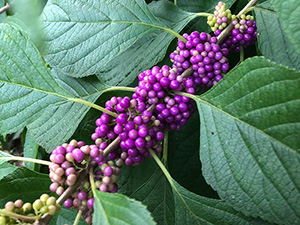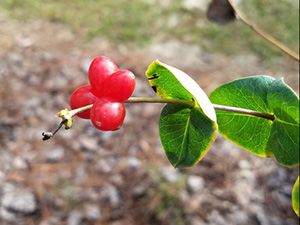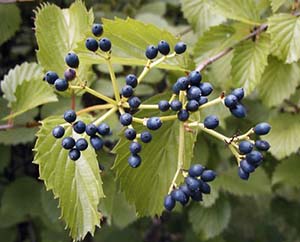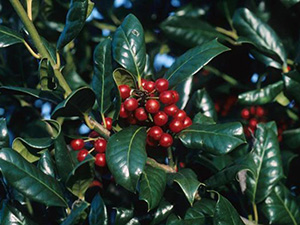Winter Berries
From hollies to beautyberry, winter brings pops of color to the landscape in the form of berries. Planting one of these winter berry plants ensures you will have plenty of material for your holiday swags and wreaths. You will also encourage songbirds and other wildlife to frequent your yard.

Beautyberry
Callicarpa americana
This Florida native works well in borders or as a specimen plant, and sports vibrant, purple berries in September through the winter. Although the leaves will drop in the chilly weather, the berries will typically persist on the stems for a few more weeks. Birds and people alike can enjoy these berries, although you will want to make them into jam or jelly instead of consuming them raw. Most beautyberry plants will have purple fruits, but there is also a cultivar with white, pearl-like berries.
 Yaupon Holly
Yaupon Holly
Ilex vomitoria
Native to the south, yaupon holly is a colorful and durable evergreen addition to the landscape. It comes in many forms, and can be used as a hedge, screen, barrier, or Bonsai. If you are hoping for berries, be sure to purchase this plant in the winter when berries abound on the female plants (male plants will not produce fruit). The berries begin appearing in the summer months and will remain through the winter.
 Coral Honeysuckle
Coral Honeysuckle
Lonicera sempervirens
Vines have berries too! Hummingbirds favor the native coral honeysuckle's long, tubular flowers. Then, bright red berries replace flowers in the fall and winter. This evergreen, vining plant is ideal for growing on trellises and fences or as a ground cover. An added benefit is that songbirds will flock to your yard to snag the berries.
Photo: Rebekah D. Wallace, University of Georgia, Bugwood.org
 Viburnum
Viburnum
Viburnum dentatum
The genus Viburnum encompasses more than 150 species, many of which produce berries in the cooler weather and attract birds. A particularly showy variety called arrowwood viburnum produces vibrant, blue berries. The arrowwood viburnum only reaches a maximum height of 12 feet, making it ideal for planting under powerlines or along streets. Viburnums will thrive in most soil types, although they cannot tolerate salt.
Photo: Dow Gardens, Bugwood.org
 Nellie R. Stevens Holly
Nellie R. Stevens Holly
Ilex x 'Nellie R. Stevens'
This classic-looking, evergreen holly produces festive red berries in the winter. It thrives in the Southern climate and grows in an attractive pyramidal shape to a maximum height of 20 to 40 feet (although it usually ranges between 15 and 25 feet tall). Select a female plant at the nursery to ensure your new plant will be bursting with berries. The Nellie R. Stevens holly is an ideal border plant and can be pruned into a hedge.
Photo: John Ruter, University of Georgia, Bugwood.org
 Wax Myrtle
Wax Myrtle
Morella cerifera
Wax myrtle is a well-loved native in the Florida landscape for its salt and flooding tolerance. The waxy berries that form along the stem are greyish in color and may not be showy, but they can be used to make candles. The dense shrub works well as a privacy hedge or specimen plant and serves as a host for birds. Only female plants will produce berries, so keep this in mind while plant shopping.
Photo: Chris Evans, University of Illinois, Bugwood.org

